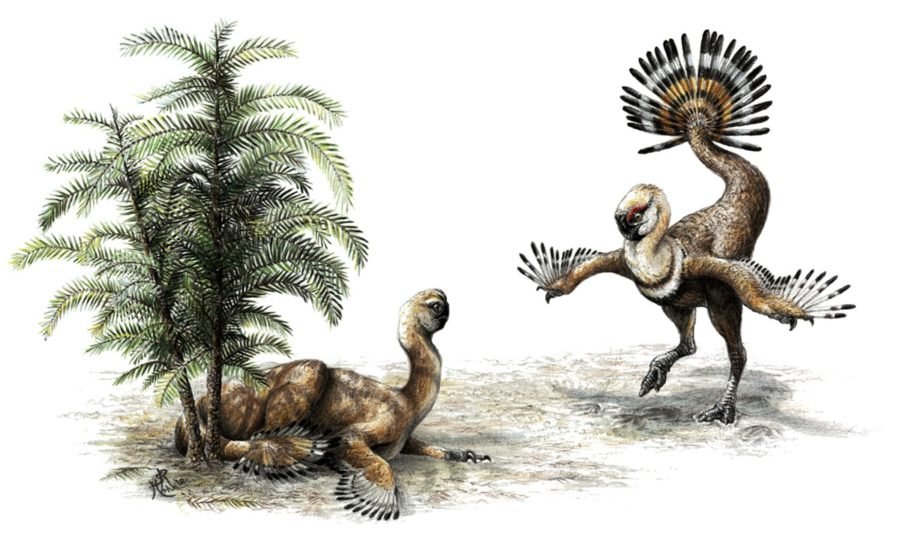‘Romeo and Juliet’ dinosaurs buried together

John Pickrell
John Pickrell

A FOSSILISED PAIR of feathered dinosaurs, found in Mongolia’s Gobi Desert, suggests the animals displayed sexual dimorphism – whereby males and females look quite different, something that we see in species such as peacocks and birds of paradise today.
When researchers at the University of Alberta, in Canada, first found the dinosaur specimens in 2011, they had no proof that they were a male-and-female pair. However, a new study of the tail anatomy of these herbivorous oviraptors has uncovered some key differences between the skeletons.
Oviraptor mating dances
Oviraptors are a group of parrot-beaked dinosaurs from the Late Cretaceous epoch; they had fans of feathers on their forearms and around their flexible tails. Researchers have argued that they could flick and waft these tails around to perform mating dances.
“Our theory was that these large feather fans were used for the same purpose as the feather fans of many modern ground birds, like turkeys, peacocks and prairie chickens: they were used to enhance courtship displays,” says lead researcher behind the find, Scott Persons.
“My analysis of the tail skeletons supported this theory,” he adds. “The skeletons showed adaptations for both high tail flexibility and enlarged tail musculature — both traits that would have helped an oviraptor to flaunt its tail fan in a mating dance.”
Romeo and Juliet dinosaurs
Scott’s research showed that though both individuals – of the species Khaan mckennai – were about the same size, and very similar anatomically, ‘Romeo’ had larger and specially shaped tail bones. This hinted that he would have been better able to shake his tail about in mating displays, and was therefore a male.
‘Juliet’, on the other hand, had shorter and more generalised tail bones, Scott says, suggesting she was a female.
The researchers believe the animals may have been mates trapped in a collapsed sand dune. This is one of the first times we have found good evidence for a mating pair of dinosaurs in the fossil record.
The research was published in the journal Scientific Reports.
Come search for dinosaurs in the Gobi Desert with the Australian Geographic Society and Odyssey Travel! Find out more and enquire about 2015-2016 departures here.
The diagram below by Jaime A. Headden shows the skeletal anatomy of Khaan mckennai.

John Pickrell is the author of Flying Dinosaurs: How fearsome reptiles became birds, published by NewSouth Books in June 2014. Follow him on Twitter @john_pickrell.

